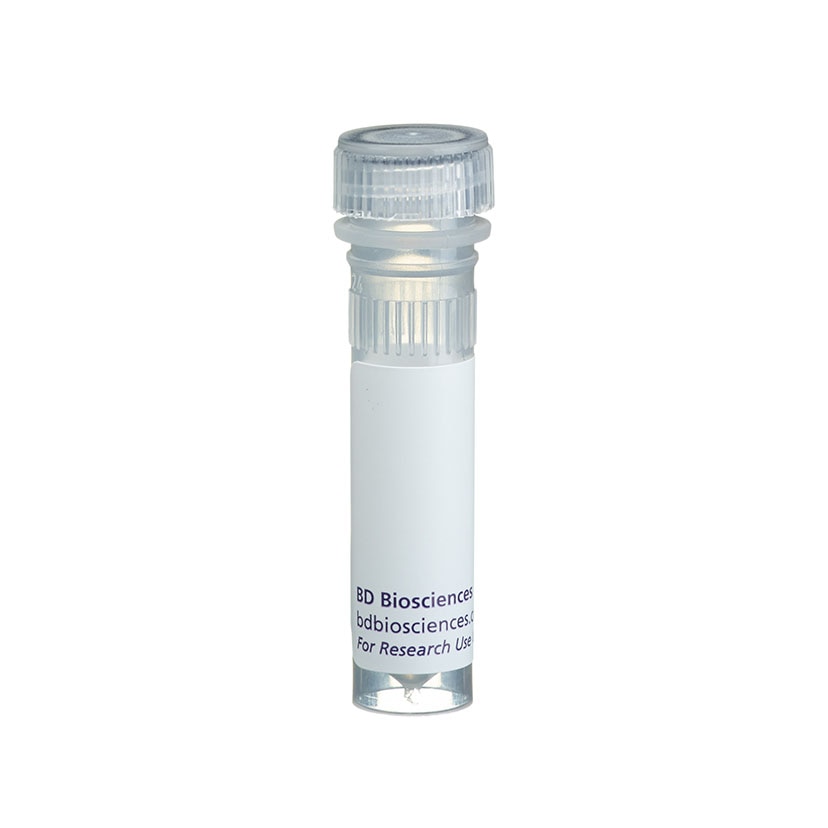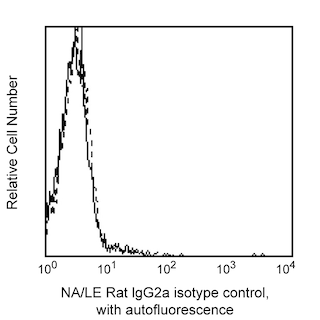-
Your selected country is
Middle East / Africa
- Change country/language
Old Browser
This page has been recently translated and is available in French now.
Looks like you're visiting us from {countryName}.
Would you like to stay on the current country site or be switched to your country?


Regulatory Status Legend
Any use of products other than the permitted use without the express written authorization of Becton, Dickinson and Company is strictly prohibited.
Preparation And Storage
Product Notices
- Since applications vary, each investigator should titrate the reagent to obtain optimal results.
- Please refer to www.bdbiosciences.com/us/s/resources for technical protocols.
Companion Products

.png?imwidth=320)
The KMC8 monoclonal antibody specifically binds to CD9 which is also known as Tetraspanin-29 (Tspan29). CD9 is a 24-kDa member of the transmembrane 4 superfamily, also called the tretraspanin family. In the mouse, CD9 is present on bone marrow myeloid cells, stromal cells, and megakaryocyte-committed progenitors; subsets of peripheral T and B lymphocytes; and neutrophils, platelets, dendritic cells, and bone marrow-derived macrophages. CD9 has been found to be associated with integrins and other cell-surface receptors. It appears to play roles in signal transduction and in regulating cellular adhesive properties. CD9 can also reportedly participate in T-cell costimulation and induction of apoptosis. The KMC8 antibody reportedly blocks certain CD9 functions and activates macrophages.
Development References (10)
-
Jennings LK, Crossno JT Jr, Fox CF, White MM, Green CA. Platelet p24/CD9, a member of the tetraspanin family of proteins. Ann N Y Acad Sci. 1994; 714:175-184. (Biology). View Reference
-
Kaji K, Takeshita S, Miyake K, Takai T, Kudo A. Functional association of CD9 with the Fc gamma receptors in macrophages. J Immunol. 2001; 166(5):3256-3265. (Clone-specific: Activation). View Reference
-
Miyake K, Medina KL, Hayashi S, Ono S, Hamaoka T, Kincade PW. Monoclonal antibodies to Pgp-1/CD44 block lympho-hemopoiesis in long-term bone marrow cultures. J Exp Med. 1990; 171(2):477-488. (Immunogen). View Reference
-
Nakorn TN, Miyamoto T, Weissman IL. Characterization of mouse clonogenic megakaryocyte progenitors. Proc Natl Acad Sci U S A. 2003; 100(1):205-210. (Biology). View Reference
-
Oritani K, Wu X, Medina K, et al. Antibody ligation of CD9 modifies production of myeloid cells in long-term cultures. Blood. 1996; 87(6):2252-2261. (Immunogen: Blocking, Immunoprecipitation, Western blot). View Reference
-
Park CS, Yashiro Y, Tai XG, et al. Differential involvement of a Fas-CPP32-like protease pathway in apoptosis of TCR/CD9-costimulated, naive T cells and TCR-restimulated, activated T cells.. J Immunol. 1998; 160(12):5790-6. (Biology). View Reference
-
Pulendran B, Lingappa J, Kennedy MK, et al. Developmental pathways of dendritic cells in vivo: distinct function, phenotype, and localization of dendritic cell subsets in FLT3 ligand-treated mice. J Immunol. 1997; 159(5):2222-2231. (Clone-specific: Immunofluorescence). View Reference
-
Tachibana I, Hemler ME. Role of transmembrane 4 superfamily (TM4SF) proteins CD9 and CD81 in muscle cell fusion and myotube maintenance. J Cell Biol. 1999; 146(4):893-904. (Clone-specific: Blocking). View Reference
-
Tanio Y, Yamazaki H, Kunisada T, Miyake K, Hayashi SI. CD9 molecule expressed on stromal cells is involved in osteoclastogenesis. Exp Hematol. 1999; 27(5):853-859. (Clone-specific: Blocking). View Reference
-
Wright MD, Tomlinson MG. The ins and outs of the transmembrane 4 superfamily. Immunol Today. 1994; 15(12):588-594. (Biology). View Reference
Please refer to Support Documents for Quality Certificates
Global - Refer to manufacturer's instructions for use and related User Manuals and Technical data sheets before using this products as described
Comparisons, where applicable, are made against older BD Technology, manual methods or are general performance claims. Comparisons are not made against non-BD technologies, unless otherwise noted.
For Research Use Only. Not for use in diagnostic or therapeutic procedures.
Report a Site Issue
This form is intended to help us improve our website experience. For other support, please visit our Contact Us page.